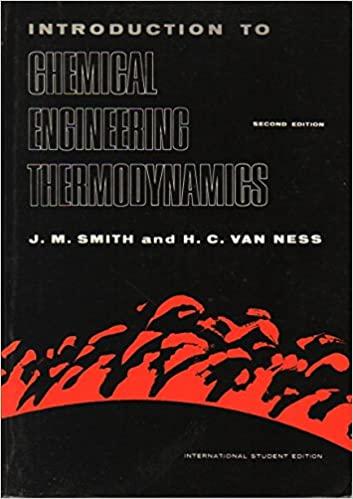Question
Ultra-pure hydrogen is required in applications ranging from the manufacturing of semiconductors to powering fuel cells. The crystalline structure of palladium allows only the transfer
Ultra-pure hydrogen is required in applications ranging from the manufacturing of semiconductors to powering fuel cells. The crystalline structure of palladium allows only the transfer of atomic hydrogen (H) through its thickness, and therefore palladium membranes are used to filter hydrogen from contaminated streams containing mixtures of hydrogen and other gases. Hydrogen molecules (H ) are first adsorbed onto the palladiums surface and are then dissociated into atoms (H), which subsequently diffuse through the metal. The H atoms recombine on the opposite side of the membrane, forming pure H . The surface concentration of H takes the form , where 1.4 kmol/m bar is known as Sieverts constant. Consider an industrial hydrogen purifier consisting of an array of palladium tubes with one tube end connected to a collector plenum and the other end closed. The tube bank is inserted into a shell. Impure H at 600 K, 15 bars, 0.7 is introduced into the shell while pure H at 6 bars, 600 K is extracted through the tubes. Determine the production rate of pure hydrogen (kg/h) for 100 tubes which are of inside diameter 3 mm, wall thickness 75 m, and length 80 mm. The mass diffusivity of hydrogen (H) in palladium at 600 K is approximately 7 10 m /s.
Step by Step Solution
There are 3 Steps involved in it
Step: 1

Get Instant Access to Expert-Tailored Solutions
See step-by-step solutions with expert insights and AI powered tools for academic success
Step: 2

Step: 3

Ace Your Homework with AI
Get the answers you need in no time with our AI-driven, step-by-step assistance
Get Started


